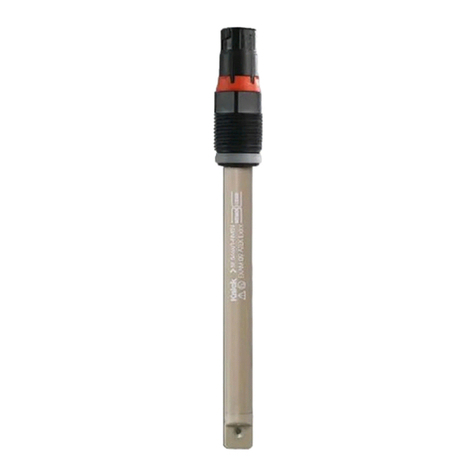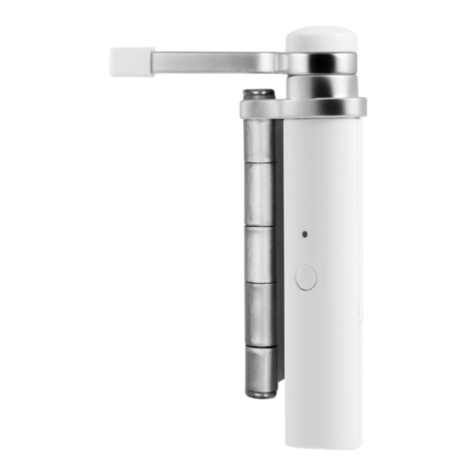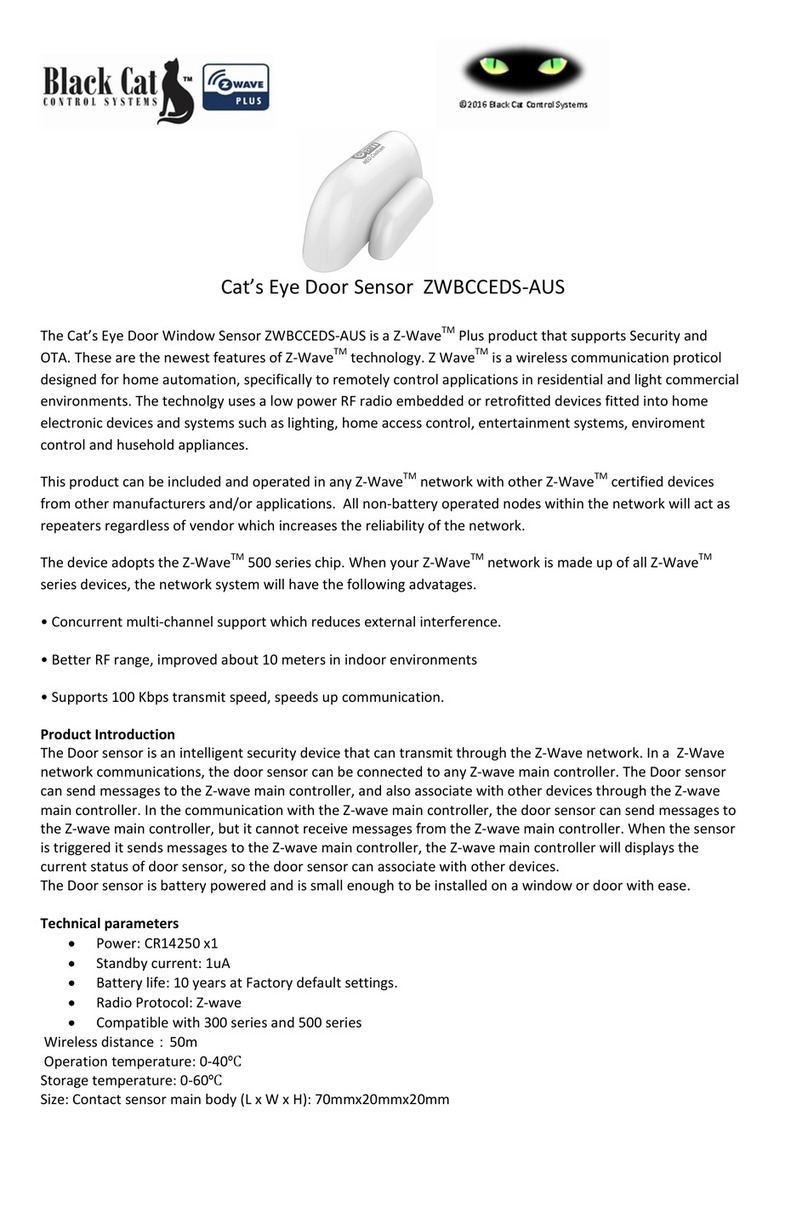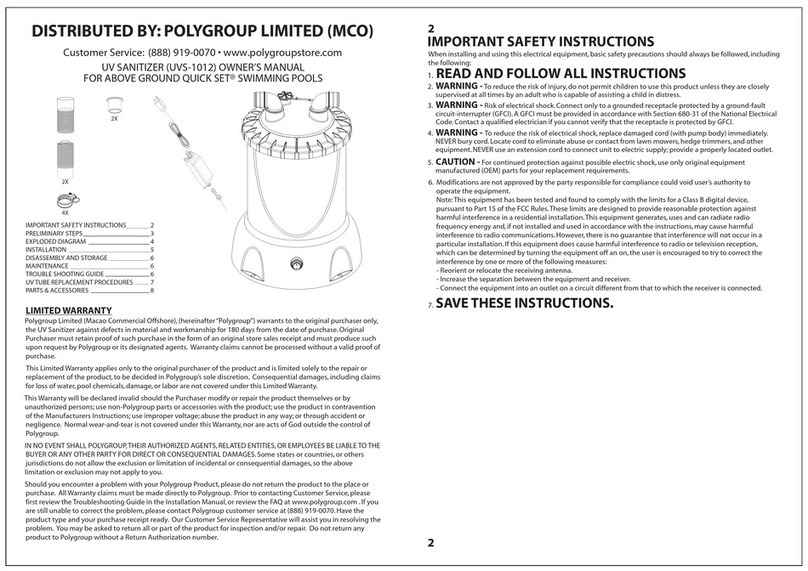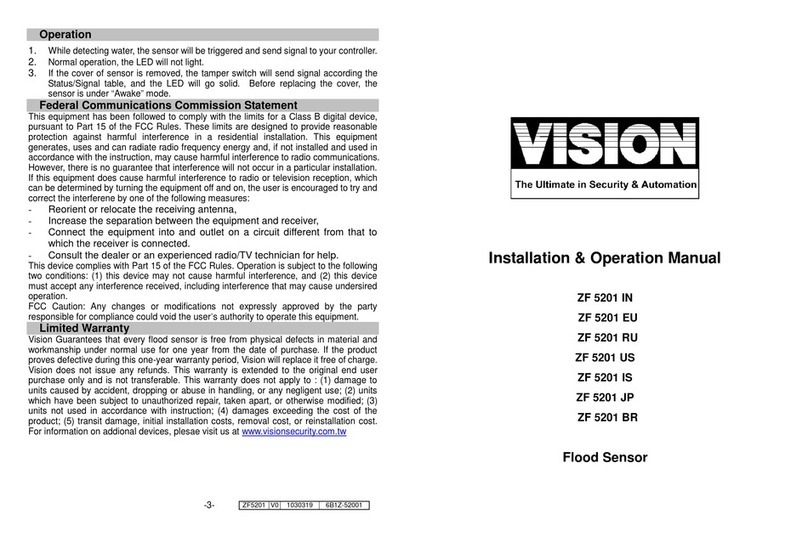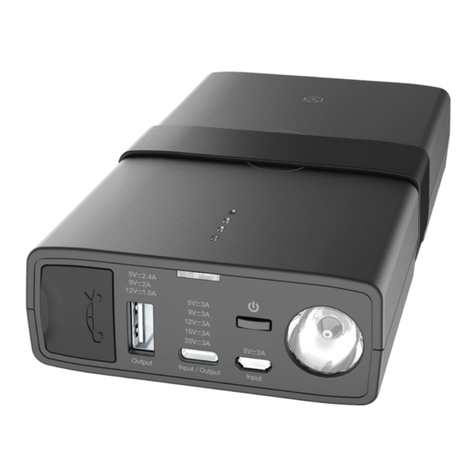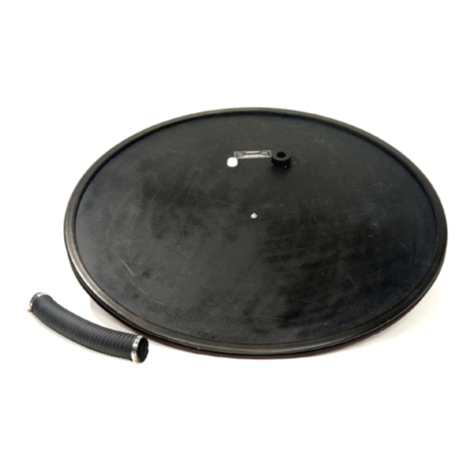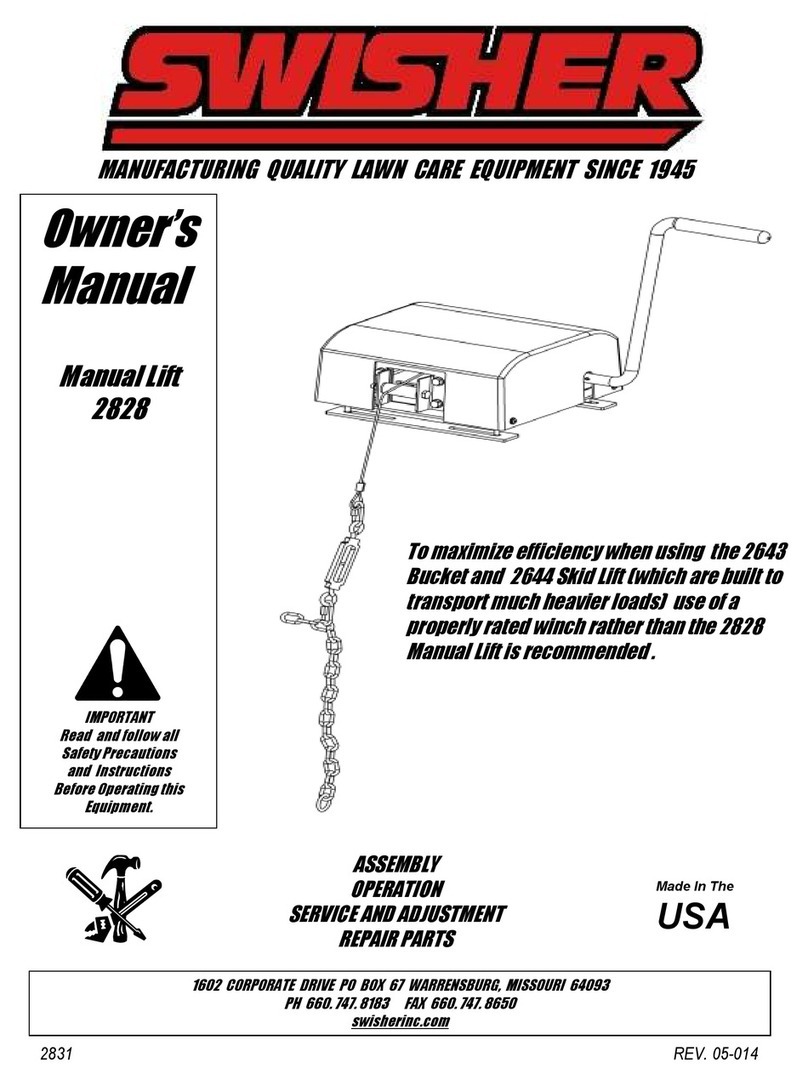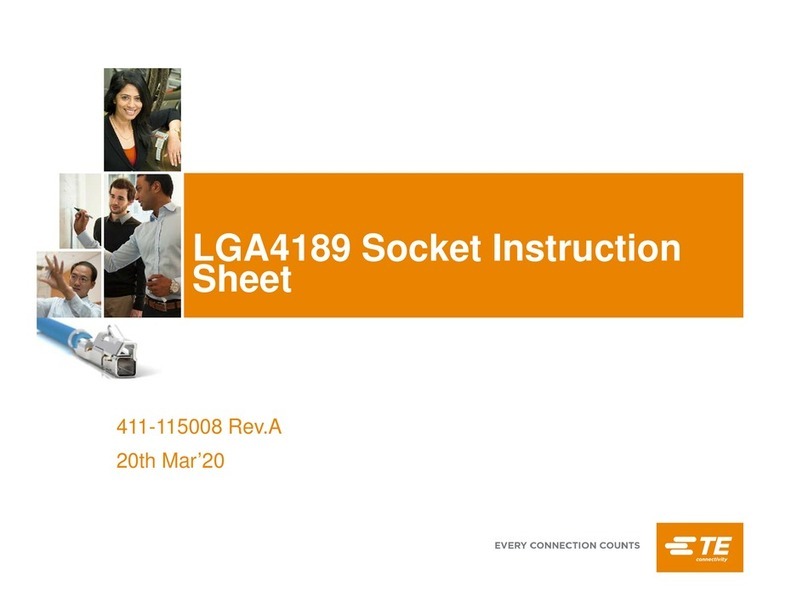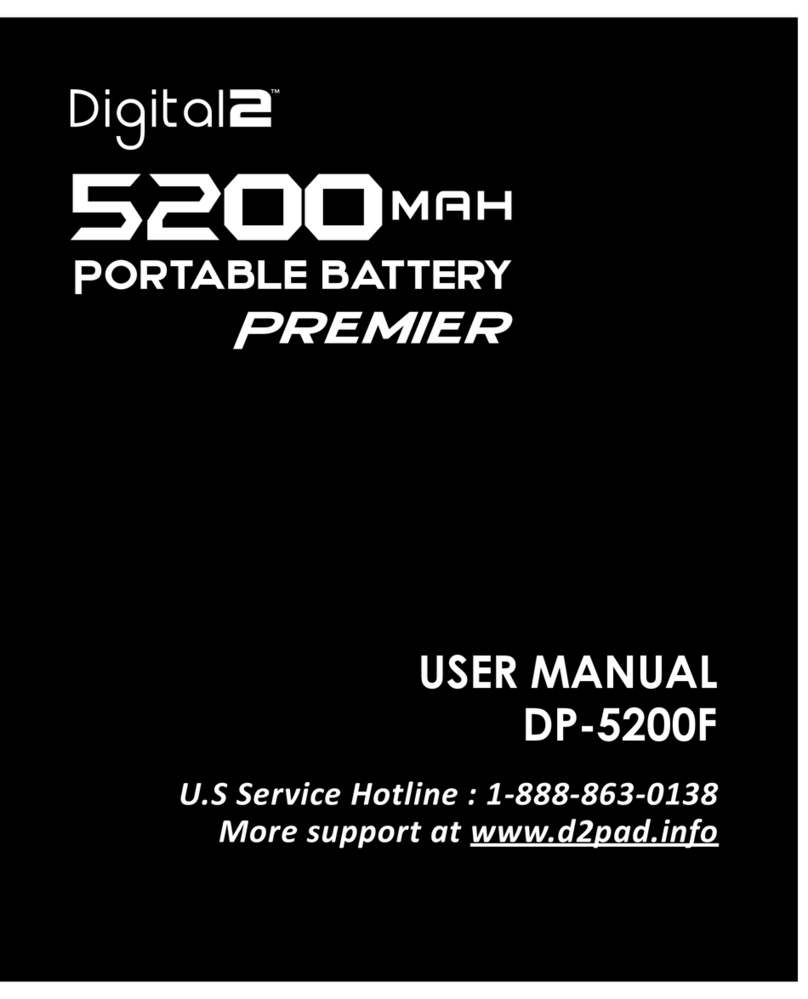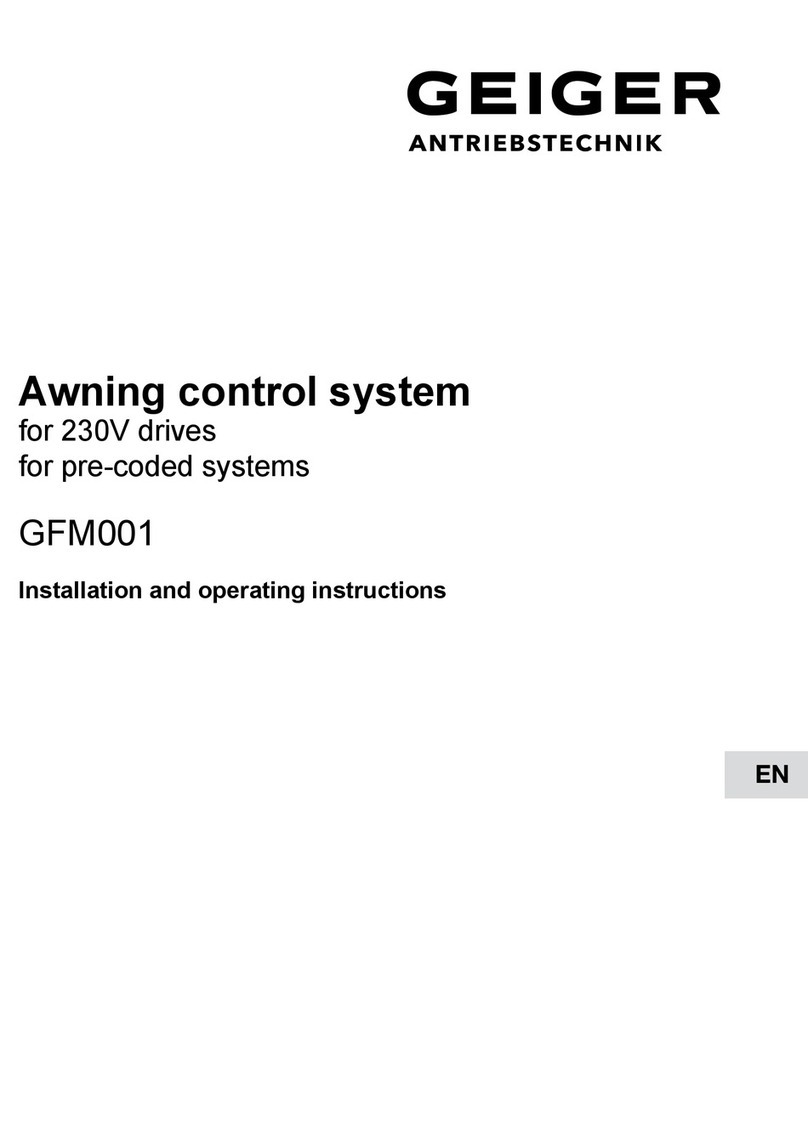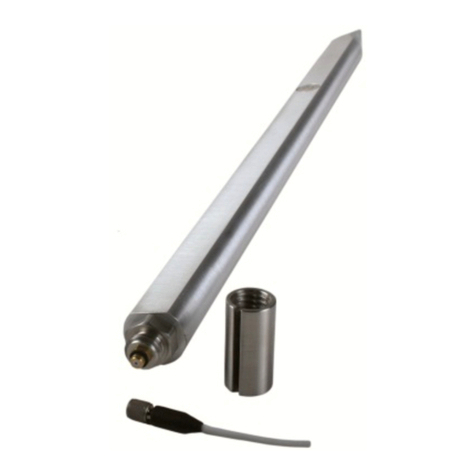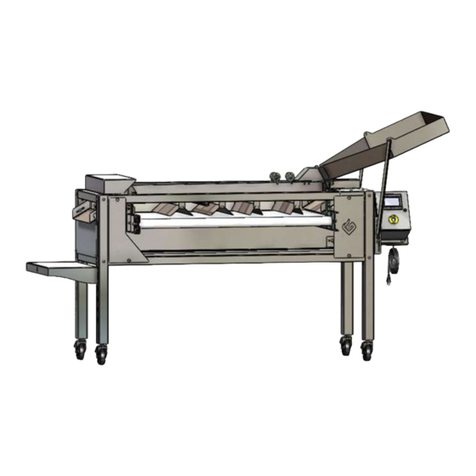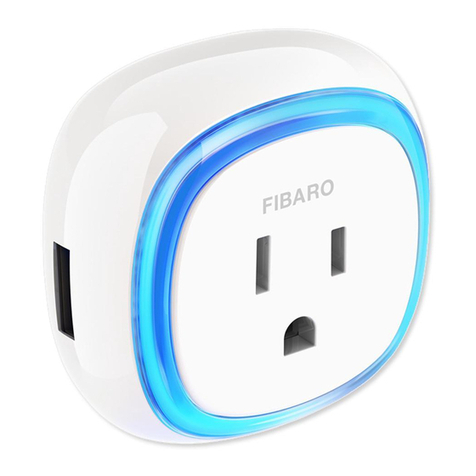EPTA iarp CF700 User guide

Cod. UM000292
ISTRUZIONI PER L’USO E LA MANUTENZIONE
USE AND MAINTENANCE
INSTRUCTIONS D’EMPLOI ET D’ENTRETIEN
GEBRAUCHS-UND BEDIENUNGS ANLEITUNGEN
INSTRUCCIONES DE EMPLEO Y MANUTENCIÓN
INSTRUCTIES VOOR HET GEBRUIK EN HET ONDERHOUD
CF700
CF900
Rev. A 04/07/2018

-2-
Il presente manuale è stato realizzato in modo semplice e razionale afnchè leggendolo conosciate a
fondo il vostro mobile. Si raccomanda di leggere attentamente il contenuto e di conservarlo unitamente
al mobile. Il costruttore declina ogni responsabilità per danni causati a persone o cose dovuti alla
mancata osservanza delle avvertenze contenute in questo manuale. Qualsiasi persona utilizzi questo
mobile dovrà leggere il presente manuale d’uso.
Sono vietati tutti gli usi dell’apparecchio NON specicati in questo manuale.
This manual was drafted in a simple and rational manner to allow you to fully understand your
equipment. You are advised to read the content carefully and keep it with the equipment.
The manufacturer cannot be held in any way liable for damage caused to people or property due to
non-compliance with warnings contained in this manual.Anyone using this equipment should read
this user manual.
All uses of the unit NOT specied in this manual are prohibited.
Ce manuel a été réalisé de façon simple et rationnelle an qu’en le lisant, vous connaissiez votre
meuble à fond. On conseille de lire attentivement le contenu et de le conserver avec le meuble.
Le fabricant décline toute responsabilité pour des dommages causés sur des personnes ou objets dus
à la non-observation des mises en garde contenues dans ce manuel. Toute personne qui utilise ce
meuble doit lire ce mode d’emploi.
Tout usage de l’appareil NON spécié dans ce manuel est interdit.
Diese Anleitung ist einfach und zweckmäßig geschrieben worden, damit Sie Ihr Kühlmöbel nach
dem Durchlesen genau kennen. Bitte lesen Sie den Inhalt aufmerksam durch und bewahren Sie
die Anleitung zusammen mit dem Kühlmöbel auf. Der Hersteller haftet nicht für Personen- und
Sachschäden, die durch die Nichtbeachtung der Warnhinweise in dieser Anleitung verursacht worden
sind. Jede Person, die dieses Kühlmöbel benutzt, muss die Bedienungsanleitung durchlesen.
Alle NICHT in dieser Gebrauchsanleitung spezizierten Verwendungen des Geräts sind
verboten.
El presente manual ha sido redactado de manera simple y racional para que, al leerlo, usted conozca
a fondo su mueble. Se recomienda leer atentamente el contenido del manual y conservarlo junto con
el mueble. El fabricante declina toda responsabilidad por daños causados a personas o a objetos por
incumplimiento de las advertencias incluidas en el presente manual. Toda persona que use el mueble
debe leer el presente manual de uso.
Están prohibidos todos los usos del equipo NO especicados en este manual.
Deze handleiding werd op een eenvoudige en rationele manier opgesteld om u in de mogelijkheid te
stellen om een grondige kennis van uw apparaat te verwerven.
Lees aandachtig de inhoud en bewaar de handleiding in de buurt van het apparaat.
De fabrikant kan niet aansprakelijk gesteld worden voor schade aan personen of zaken, te wijten aan
het niet in acht nemen van de waarschuwingen in de handleiding.
Elkeen die dit apparaat wilt gebruiken, moet eerst de gebruiksaanwijzing lezen.
Elk gebruik dat niet in deze handleiding is vermeld IS VERBODEN.

-3-
INFORMAZIONI PER L’UTILIZZATORE
AVVERTENZA PER GLI APPARECCHI
CHE UTILIZZANO REFRIGERANTE R290
(PROPANO)
Il propano è un gas naturale senza effetti sull’ambiente,
ma inammabile.
E’ quindi indispensabile accertarsi che tutti i tubi del circuito refrigerante
non siano danneggiati, prima di collegare l’apparecchio alla rete di
alimentazione.
Ogni 8 gr. di refrigerante, il locale d’installazione deve disporre di un
volume minimo di 1 m³.
La quantità di refrigerante dell’apparecchio è indicata sulla targa dati
tecnici dell’apparecchio.
In caso di perdita di refrigerante, evitare che amme libere o fonti di
accensione vengano a trovarsi in prossimità del punto di fuga.
Fare attenzione a non danneggiare le tubazioni del circuito refrigerante
durante il posizionamento, l’installazione e la pulizia.
Evitare fuochi o scintille all’interno dell’apparecchio.
Attenzione! Non danneggiare il circuito refrigerante.
Attenzione! Non danneggiare le pareti interne o esterne dell’apparecchio:
il circuito del uido refrigerante potrebbe danneggiarsi. In caso di
pareti danneggiate non avviare l’apparecchio e rivolgersi ad un centro
assistenza.
Attenzione! In caso di circuito del uido refrigerante danneggiato non
avviare l’apparecchio e rivolgersi ad un centro assistenza.
Attenzione! Mantenere libere da ostruzioni le aperture di ventilazione
nell’involucro dell’apparecchio o nella struttura a incasso.
Attenzione! Non utilizzare apparecchi elettrici all’interno degli scomparti
dell’apparecchio per la conservazione dei cibi congelati se questi non
sono del tipo raccomandato dal costruttore.
Attenzione! Non conservare sostanze esplosive, quali contenitori sotto
pressione con propellente inammabile, in questo apparecchio.
ITALIANO

-4-
INDICAZIONI DI SICUREZZA
•Leggete attentamente il manuale e rispettate i contenuti prima di
installare ed utilizzare l’apparecchio.
•Conservate sempre il libretto d’istruzione e in caso di vendita
dell’apparecchio consegnatelo al nuovo proprietario.
•Questo apparecchio è molto pericoloso se lasciato esposto alla pioggia,
ai temporali ed alle intemperie con il cavo di alimentazione inserito alla
presa di corrente.
•I bambini devono essere sorvegliati per asssicurarsi che non giochino con
l’apparecchio.
•Non toccate né manovrate mai l’apparecchio a piedi nudi o con le mani
e i piedi bagnati.
•Gli elementi dell’imballo quali sacchetti di plastica, polistirolo, fascette
plastiche, non devono essere lasciati alla portata dei bambini in quanto
potenziali fonti di pericolo.
•Non permettete che i bambini giochino con l’apparecchio es. sedendosi
nei cestelli o dondolandosi o aggrappandosi ai coperchio, il conservatore
potrebbe ribaltarsi, oppure potrebbero cadere eventuali oggetti posti sulla
sua sommità.
•Dopo aver installato l’apparecchio assicuratevi che non poggi sul cavo
d’alimentazione.
•Per staccare l’apparecchio dalla rete di alimentazione estraete la spina.
Non tirate il cavo di alimentazione di quest’ultima.
•Con circuito refrigerante danneggiato è necessario assolutamente spegnere
le luci.
•Non conservare sostanze esplosive, quali contenitori sotto pressione con
propellente inammabile, in questo apparecchio.
•Non collegare l’apparecchio se è danneggiato. In caso di dubbi, contattare
il servizio di assistenza o il rivenditore.
•Se il cavo di alimentazione è danneggiato, non utilizzare l’apparecchio
e tentarne la riparazione: esso deve essere sostituito dal costruttore o
dal suo servizio assistenza.
•Parti elettriche possono essere sostituite solo da personale qualicato.

-5-
MOVIMENTAZIONE
L’unità viene spedita ancorata su base in legno e protetta da montanti angolari e da involucro in nylon.
La movimentazione va effettuata esclusivamente mediante carrello elevatore di potenza adeguata al peso
dell’apparecchio stesso: durante tale operazione l’apparecchio deve essere posizionato sull’apposito
pallet fornito in dotazione (pallet che va conservato per successive movimentazioni).
ATTENZIONE! Liberate l’apparecchio dall’imballo togliendo le viti che lo bloccano
al pallet di legno.
SCELTA DEL LUOGO DI POSIZIONAMENTO
Per garantire un esercizio senza guasti del banco frigorifero, osservare assolutamente i seguenti punti:
• Non posizionare il banco refrigerato all’aperto.
• Non posizionare il banco refrigerato in prossimità di sorgenti termiche ad es. termosifoni.
• Evitare irradiazione solari dirette (ad es. attraverso nestre).
• Non esporre il banco refrigerato alle correnti d’aria di ventilatori o di porte aperte.
• Fare attenzione all’aria di scarico degli impianti di condizionamento/ventilazione.
• Non chiudere la zona inferiore del banco refrigerato con oggetti, ad es. scatole di cartone.
• È indispensabile che il gruppo condensatore sia in condizione di libero scambio d’aria; pertanto
le griglie di aerazione non devono essere ostruite da scatole o altro e la distanza dal muro deve
essere almeno di 10 cm.
Air-Condion

-6-
INSTALLAZIONE
Dopo aver tolto l'imballo procedere ad una pulizia
accurata di tutto il banco, utilizzando acqua tiepida
e sapone neutro al 5% ed asciugandolo poi con
un panno morbido.
Attenzione!
Il banco va sistemato in piano, lontano da
fonti di calore (radiatori, stufe etc.), non
esposto ai raggi del sole.
Ènecessario che il gruppo condensatore sia in
condizione di libero scambio d'aria, pertanto le
zone di aerazione non devono essere ostruite da
scatole o altro.
Non sistemare l'apparecchio all'aperto e non
esporlo alla pioggia.
L'APPARECCHIO NON E' IDONEO PER
INSTALLAZIONE IN AMBIENTI CON
PERICOLODIINCENDIOODIESPLOSIONE
O SOTTOPOSTI A RADIAZIONI.
Non usare apparecchi elettrici nel vano
refrigerato. L'apparecchio non è idoneo a
sopportare rovesciamenti di liquido sulla
sommità dello stesso.
Per questo non appoggiare o collocare
contenitori di liquidi immediatamente al
di sopra del banco frigorifero. Installare e
posizionare l'apparecchio in modo che la spina
di alimentazione sia facilmente accessibile.
Le condizioni ambientali esterne per un regolare
funzionamento dell'apparecchio sono specicate
sulla targhetta dati tecnici.
Sistemare l'apparecchio ad una
distanza adeguata dalle pareti.
10 cm
20 cm
USO CORRETTO
Attenzione!
Non introdurre nel comparto a bassa temperatura bottiglie o contenitori di vetro in quanto potrebbero
screpolarsi o rompersi una volta che il loro contenuto si è congelato.
Nel posizionare il prodotto nelle vasche non oltrepassare il corrispettivo limite di carico.
Attenzione! L’apparecchio è destinato alla SOLA conservazione di prodotti preconfezionati.
È fondamentale non superare i limiti di carico indicati al ne di non alterare la circolazione corretta di
aria ed evitare così una temperatura del prodotto più elevata.
UTILIZZAZIONE STAGIONALE
Quando la macchina rimane inattiva per lunghi periodi di tempo ccorre effettuare le seguenti opera-
zioni preliminari:
- togliere la spina dalla presa di corrente;
- sbrinare,pulire bene ed asciugare l'apparecchio;
- lasciare il coperchio semichiuso per evitare la formazione di cattivi odori.

-7-
• Localizzate la targhetta apposta alla macchina per rilevare i dati tecnici.
• Vericare il modello della macchina e la tensione di alimentazione prima di compiere qualsiasi
operazione.
• Se rilevate delle discordanza contattate subito il costruttore o l’azienda che ha effettuato la
fornitura.
1. Costruttore
2. Codice
3. Marcatura di
conformità
4. Tensione di
alimentazione (V)
5. Frequenza di
alimentazione (Hz)
6. Potenza elettrica
assorbita (W)
7. Potenza elettrica
assorbita in
sbrinamento (W)
8. Potenza max.
lampada (W)
9. Volume lordo
10. Tipo e quantità del
refrigerante.
11. Classe climatica
È assolutamente vietato rimuovere, manomettere la targa e modicarne
o alterarne i dati in essa contenuti.
IDENTIFICAZIONE APPARECCHIATURA
* esempio targhetta
1
2
3
45
6
7
8
9
10
11
11
ELIMINAZIONE
L'apparecchio contiene olio, gas refrigerante inammabile, parti in plastica, parti metalliche e vetro.
Attenzione! L’isolamento poliuretanico utilizza come espandente CICLOPENTANO, una sostanza
senza effetti sull'ambiente, ma inammabile. Per garantire la massima cura per gli aspetti ambientali all'atto
della demolizione si raccomanda di non abbandonare mai l'apparecchio nell'ambiente.
Non gettate l'imballo dell'apparecchio nella spazzatura bensì selezionate i vari materiali quali:
polistirolo,cartone,sacchi di plastica. La demolizione dell'apparecchio ed il recupero dei materiali componenti
deve avvenire nel rispetto delle locali normative vigenti in materia.
AVVERTENZEPERILCORRETTOSMALTIMENTODELPRODOTTO
AI SENSI DELLA DIRETTIVA EUROPEA 2002/96/EC
Alla ne della sua vita utile il prodotto non deve essere smaltito insieme ai riuti urbani.
Può essere consegnato presso gli appositi centri di raccolta differenziata predisposti dalle
amministrazioni comunali, oppure presso i rivenditori che forniscono questo servizio.
Smaltire separatamente un elettrodomestico consente di evitare possibili conseguenze
negative per l'ambiente e per la salute derivanti da un suo smaltimento inadeguato e
permette di recuperare i materiali di cui è composto al ne di ottenere un importante
risparmio di energia e di risorse.
Per rimarcare l'obbligo di smaltire separatamente gli elettrodomestici, sul prodotto è
riportato il marchio del contenitore di spazzatura mobile barrato.

-8-
MESSA IN SERVIZIO
Se il banco refrigerato è stato fortemente inclinato a causa del
posizionamento o dei montaggio accessori, attendere minimo 3
ore prima della messa in funzione in modo da permettere all’olio
lubricante di raccogliersi nel compressore. Se questa prescrizione
non viene osservata, la macchina frigorifera a compressione può
essere danneggiata irreparabilmente. Accertarsi che la tensione indicata sulla targhetta
dati tecnici corrisponda a quella di rete.
LA LINEA DI ALIMENTAZIONE ELETTRICA A CUI
SARA' ALLACCIATO IL FRIGORIFERO DEVE ESSERE
PROTETTA DA INTERRUTTORE DIFFERENZIALE AD
ALTA SENSIBILITA' (In=16 A, Id = 30 mA) E COLLEGATO
ALL' IMPIANTO GENERALE DI TERRA.
L’installazione deve essere essere effettuata secondo disposizioni
del costruttore, da personale qualicato e in conformità alle vigenti
normartive elettriche dei paesi di destinazione del mobile.
Un’errata installazione può causare danni a persone, animali o cose, nei confronti del
quale il costruttore non ha nessuna responsabilità.
Il fabbricante declina ogni responsabilità per eventuali danni causati a persone o cose
derivanti dalla mancata osservazione di questa norma.
La messa a terra è necessaria ed obbligatoria per un corretto funzionamento
dell'apparecchio. Per il collegamento non utilizzare assolutamente riduzioni,
prolunghe, adattatori o prese multiple. Il collegamento deve avvenire pertanto in maniera
DIRETTA alla rete di alimentazione.
Il cavo deve essere ben teso, in posizione riparata da eventuali urti, non deve essere in prossimità di
liquidi o acqua e a fonti di calore, non deve essere danneggiato.
In caso di rottura del cavo di alimentazione del banco, esso deve essere sostituito dal costruttore oppure
da un ente da esso preposto. La spina deve risultare accessibile anche dopo l’installazione del mobile.
MANUTENZIONE PERIODICA
ATTENZIONE! QUALSIASI INTERVENTO EFFETTUATO SULL’APPARECCHIO
DA PARTE DELL’UTENTE RICHIEDEASSOLUTAMENTE IL DISTACCO DELLA
SPINA DALLA PRESA DI CORRENTE.
ATTENZIONE! Utilizzare scarpe e guanti protettivi durante le operazioni di manutenzione.
Ispezionare periodicamente il cavo di alimentazione per controllare se danneggiato. Se il cavo di
alimentazione è danneggiato, non utilizzare l’apparecchio e tentarne la riparazione: esso deve essere
sostituito dal costruttore o dal suo servizio assistenza o, comunque, da una persona con qualica similare,
in modo da prevenire ogni rischio. Nessuna protezione (griglia o carter) va rimossa da parte di personale
non qualicato ed evitare assolutamente di far funzionare l’apparecchio con tali protezioni rimosse.
PULIZIA ESTERNA VASCA
Per una buona conservazione delle superci dell'apparecchio operare come segue:
MOBILE ESTERNO: Quando è necessario pulire delicatamente il mobile esterno usare un panno
morbido imbevuto di soluzione di acqua e detersivo neutro.
SUPERFICI IN ACCIAIO INOSSIDABILE: Lavare con acqua tiepida e saponi neutri ed asciugare
con panno morbido; evitare pagliette o lana di acciaio che possono deteriorare le superci.
SUPERFICI IN MATERIALE PLASTICO: Lavare con acqua e saponi neutri, sciacquare ed
asciugare con panno morbido; evitare assolutamente l'uso di alcool, acetone e solventi che deteriorano
permanentemente le superci.
SUPERFICI IN VETRO: Usare unicamente prodotti specici per la pulizia dei vetri.
Non è consigliabile usare acqua in quanto può depositare calcare sulla supercie del vetro.

-9-
PULIZIA INTERNA VASCA
Per ottenere sempre il massimo rendimento dell’apparecchio
è necessario effettuare uno sbrinamento manuale quando la
formazione di brina sulle pareti supera uno spessore di 5 mm;
procedere come segue:
1. Staccare la spina.
2. Togliere i prodotti dalla vasca e riporli in un altro
conservatore a -18°C.
3. Estrarre i tappi di drenaggio interno ed esterno e posizionare
una vaschetta sotto il canotto di scarico, nella parte
posteriore del mobile, per la raccolta dell’acqua.
4. Introdurre un catino d’acqua calda ma non bollente sul
fondo della vasca avendo cura di porvi sotto un pezzo di
cartone; chiudere il coperchio e attendere circa mezz’ora.
5. Lavare accuratamente l’interno con acqua e sapone neutro; sciacquare ed asciugare bene.
6. Rimettere in funzione l’apparecchio e dopo circa1 ora caricare i prodotti da conservare.
Per la pulizia non utilizzare detersivi aggressivi o abrasivi.
Per pulire il frigorifero non usare mai acqua corrente o apparecchi ad alta pressione d’acqua.
Attenzione! Non usare getti d’ acqua nelle operazioni di pulizia: si possono
danneggiare le parti elettriche.
Attenzione! Non usare dispositivi meccanici o altri mezzi per accelerare il
processo di sbrinamento, diversi da quelli raccomandati dal costruttore.
REGOLAZIONE TEMPERATURA
Il termostato viene tarato presso la fabbrica e non dovrebbe essere toccato dall'utilizzatore.
Soltanto nel caso in cui la temperatura risulti non soddisfacente, si può agire ruotando la manopola (1).
I numeri riportati non indicano direttamente il valore della temperatura bensì soltanto posizioni di
riferimento:a numero maggiore corrisponde una temperatura più fredda.
COMANDI
1) Termostato
2) Termometro
3) Spia di allarme accesa: con apparecchio non in temperatura
4) Spia verde: indica che l'apparecchio è alimentato dalla linea.
1
2
3
4

-10-
INCONVENIENTI E RIMEDI
Gli inconvenienti di funzionamento che si riscontrano negli apparecchi frigoriferi sono dovuti, nella
maggioranza dei casi, a cause banali o ad installazione elettrica difettosa. Si tratta quindi di cause che
possono essere facilmente eliminate sul posto.
L’apparecchio non funziona:
• Controllare che la tensione arrivi regolarmente alla presa;
• Controllare che la spina sia bene inserita nella presa.
Se il motivo dell’interruzione elettrica non dipende da questo, chiamate il più vicino centro di assistenza
e svuotate il mobile.
La temperatura interna non è soddisfacente
• Controllare che l'apparecchio non si trovi vicino ad una fonte di calore
• Controllare che non vi sia un eccessivo accumulo di ghiaccio sulle pareti interne della vasca;
• Controllare che la temperatura non sia regolata su una posizione errata del termostato;
• Controllare che il condensatore non risulti intasato o ostruito;
• Controllare la perfetta chiusura del coperchio.
Se il problema dopo eventuali veriche dovesse persistere, chiamate il più vicino centro di assistenza.
L'apparecchio è rumoroso:
• Controllare che tutte le viti ed i bulloni siano ben serrati;
• Controllare che l'apparecchio sia ben livellato;
• Controllare che qualche tubo o pala dei ventilatori non siano in contatto con altre parti.
Se il disturbo persistesse rivolgersi al più vicino centro di assistenza.

-11-
INFORMATION ABOUT USE
ENGLISH
SAFETY WARNINGS FOR THE APPLIANCES
USING R290 COOLING FLUID (PROPANE)
Propane is a natural gas that doesn’t affect the environment
but is inammable.
It is therefore essential to ensure that all refrigerant pipes
are not damaged before connecting the appliance to the mains supply.
Every 8 gr. Of refrigerant, the installation room must have a 1 m³
minimum volume.
The amount of refrigerant of the appliance is indicated on the rating
plate of the device.
In the event of leakage of the refrigerant, avoid using open ames or
sources of ignition in the vicinity of the area of the leak. Be careful not
to not damage the refrigerant circuit pipes during positioning, installation
and cleaning.
Avoid using naked ames or sparks inside the appliance.
Warning! Do not damage the refrigerant circuit.
Warning! Do not damage the inner or outer walls of the appliance: the
refrigerant uid circuit may be damaged. In case of damage to the walls,
do not start the appliance and contact a qualied service technician.
Warning! In case of damage to the refrigerant uid circuit, do not start
the appliance and contact a qualied service technician.
Warning! Keep the ventilation openings in the appliance casing or in
the recessed structure clear of obstructions.
Warning! Do not use electrical appliances inside the compartments of
the appliance for storing frozen foods if these are not those recommended
by the manufacturer.
Warning! Do not store explosive substences such as aerosol cans with
ammable propellant in this aplliance.

-12-
SAFETY INFORMATION
•Read the manual carefully and adhere to the contents before
installing and using the appliance.
•Always keep the instructions manual safe and if the appliance is sold,
hand it over to the new owner.
•This equipment is very dangerous if left exposed to rain, thunderstorms
or bad weather with the power cable plugged into the power socket.
•Do not ever touch or handle the appliance with bare feet or with wet
hands and feet.
•The children must be supervised to ensure that they do not play with
the appliance.
•The packaging materials, such as plastic bags, polystyrene, plastic
cable ties, must not be left in reach of children as they are potential
sources of danger.
•Do not let children play with the appliance e.g. sitting in the baskets
or rocking on or holding the cover, the cooler may overturn, or any
items placed on top of it may fall down.
•After installing the appliance make sure that it is not positioned on
the power cable.
•To disconnect the appliance from the mains, take out the plug. Do not
pull the power cable out of it.
•If the coolant circuit is damaged, it is strictly necessary to turn off the
lights.
•Do not store explosives, such as pressurized containers with ammable
propellant, in this appliance.
•Never connect the cabinet to the power supply if it is damaged ( in
transit or otherwise). When in doubt, contact your service organization
or dealer.
•If the supply cord is damaged, it must be replaces by the manufacturer,
its service agent or similarly qualied persons in order to avoid a hazard.
•Electronic elements may only be replaced by a qualied eletrician or
person with experience in electrical engineering.
•Never use mechanical devices or any other means to accelerate the
defrosting process, other than those recommended by the manufacturer.

-13-
HANDLING
The unit is shipped anchored onto a wooden base and protected by corner posts, cardboard top and
nylon wrapping. Movement should be carried out exclusively using a forklift of adequate power for
the weight of the appliance: during this operation, the appliance must be positioned on the specic
pallet provided (pallet should be kept for subsequent movements).
WARNING! Free the appliance from the packaging by removing the screws fastening
the pallet to the wood.
SELECTING THE PLACE OF INSTALLATION
In selecting the place of installation, ensure that the following instructions are observed, this being vital for
proper and troublefree working of the cabinet:
• Do not install the cabinet outdoors.
• Do not install the cabinet in the vicinity of heating radiators or other heat sources.
• Do not install the cabint where it is exposed to direct sun light (e.g. through windows).
• Do not install the cabinet where it is exposed to drafts from ventilators open doors.
• Pay attention to air outlet from air conditioners/ ventilators.
• Keep the air intake and outlet area around the plinth area of the cabinet clear of cartons and other obstacles.
• It is necessary taht the condensing unit obtains a good circulation of air around it; also the area around
the condensing unit should not be obstructed by boxes or other objects; keep a distance from the wall
of 10 cm. at least.
Air-Condion

-14-
INSTALLATION
Take out packing and clean all the cabinet using
warm water together with 5% of neutral soap then
dry it with a soft-cloth.
Warning!
The refrigerator must be installed on a
perfectly even surface, far away from any
heat source included sun rays.
It is necessary to allow a good circulation of air in
the condenser group, avoid obstructing the front
grid by placing any boxes in front of it.
Do not install the unit in open places and don’t
expose it to rain.
THE REFRIGERATOR IS NOT SUITABLE
FOR WORKING IN DANGEROUS
ENVIRONMENT WITH RISK OF FIRE,
EXPLOSIONS OR RADIATIONS.
Never use electrical equipment in the
refrigerated compartment.
Never place containers of liquid on or
immediately above the ticket counter; should
the content spill out, it would damage the
counter.
Install and position the unit in such a way so
as to allow easy access to the power socket.
Operation is regular with ambient temperature
indicated on technical data plate.
Keep a distance from the walls.
10 cm
20 cm
CORRECT USE
Warning!
Do not put bottles or other glass containers in the freezer compartment as they might crack or break
when the contents are frozen.
It’s absolutely forbidden to place the product in the tanks over the max load level.
Warning! The appliance is intended for the SOLE storage of pre-packaged products.
It is fundamental not to exceed the load limits indicated to avoid altering correct air circulation and
thereby avoid a higher product temperature.
SEASONAL USE
When the unit is kept unused for a long time, please take note of the following procedures:
- unplug the unit;
- defrost, clean and dry well the unit;
- leave the lid open to avoid possible formation of bad odours.

-15-
DISPOSAL
The cabinet contains oil, inammable cooling gas, plastic and metallic components and glass .
Warning!
Polyurethane insulation uses CICLOPENTHANE as expander, that doesn’t affect the
environment but is inammable. To guarantee the same respect when it’s disposed of , never abandon
the equipment outside. Don’t throw the packaging material from your equipment in the rubbish but
sort the various materials: eg.polystyrene, cardboard, plastic bags.
The demolition of the cabinet and the recovery of the component materials must be carried out according
to the local regulations in force in this matter.
IMPORTANT INFORMATION FOR CORRECT DISPOSALOFTHE PRODUCT
IN ACCORDANCE WITH EC DIRECTIVE 2002/96/EC
At the end of its working life, the product must not be disposed of as urban waste.
It must be taken to a special local authority differentiated waste collection centre or to a
dealer providing this service.
Disposing of a household appliance separately avoids possible negative consequences
for the environment and health deriving from inappropriate disposal and enables the
constituent materials to be recovered to obtain signicant savings in energy and resources.
As a reminder of the need to dispose of household appliances separately, the product is
marked with a crossed-out wheeled dustbin.
• Located on the plate afxed to the machine to detect the technical data.
• Check the model and power supply voltage before carrying out any operation.
• If discrepancies are found, immediately contact the manufacturer or the company that supplied
the equipment.
1. Manufacturer
2. Code
3. Conformity marking
4. Power supply voltage
(V)
5. Power supply frequency
(Hz)
6. Absorbed electrical
power (W)
7. Absorbed electrical
power in defrosting (W)
8. Light max. power (W)
9. Gross volume
10. Type and quantity of
refrigerant
11. Climate class
It is strictly forbidden to remove, tamper with the plate and change or
alter the data contained in it.
EQUIPMENT IDENTIFICATION
* Plate example
1
2
3
45
6
7
8
9
10
11
11

-16-
PUTTING INTO OPERATION
If the cabinet has been sharply tilted while being sited or for
mounting of accessories, it must be left to stand for at least three
hours before being started to allow the lubricating oil to settle in
the compressor.
Failure to do so can cause total destruction of the compressor
refrigerating system.
Check that the voltage on the identication plate is the same as
that of the network.
THE ELECTRICAL SUPPLY LINE TO WHICH THE
REFRIGERATOR WILL HAVE TO BE CONNECTED
IS TO BE PROTECTED BY A VERY SENSITIVE
DIFFERENTIAL SWITCH (Rc=16A,Dc=30mA); IT IS
ALSO TO BE LINKED TO THE GENERAL EARTHING
PLANT.
Follow the manufacturer’s instructions to install the unit, using qualied personnel
and complying with the electrical regulations for the specic country.
Incorrect installation may cause injury and damage; the manufacturer is not liable
for this.
The manufacturer disclaims all responsability for any damage to people or things due
to incorrect observance of this rule.
Earthing is necessary and compulsory by law.
Absolutely never use reduction units, patch cords, adapters or multiple socket outlets to connect
the counter. DIRECTLY connect the equipment to the mains.
The cable should be fully extended and located where it is unilikely to be struck, caught or stepped on,
away from water and the other liquids and heat sources and must not be damaged.
In case of breakage of the power cable of the cabinet, it must be replaced by the manufacturer or by
instruction it change of it. The plug must still be accessible even after installing the unit.
PERIODIC MAINTENANCE
WARNING! ANY WORK CARRIED OUT ON THE APPLIANCE BY THE USER
STRICTLY REQUIRES THE POWER PLUG BEING DISCONNECTED FROM THE
MAINS SOCKET.
WARNING! Use protective shoes and gloves during maintenance operations.
Inspect the power cable to see if it is damaged. If the power cable is damaged, do not use the
appliance and try to repair it: it must be replaced by the manufacturer or its customer service
department or by a similarly qualied person, in order to prevent any risks. No protection (grill
or guard) should be removed by unqualied personnel and strictly avoid operating the appliance
with these protections removed.
OUTER CLEANING
For a good preservation of the cabinet’s body a periodical cleaning is necessary.
EXTERNAL BODY: When necessary, the external body should be cleaned with a cloth and a neutral
soap and water solution.
STAINLESS STEEL SURFACES: Wash with warm water and mild detergent, rinse well and dry
with soft cloth. Avoid scouring pads etc. which will spoil the nish of the stainless steel.
SURFACES IN PLASTIC MATERIAL: Wash with warm water and mild detergent, rinse well and
dry with soft cloth; under no circumstances should alcohol, methylated spirits or solvents be used.
GLASS SURFACES: Only use products specically designed for glass cleaning; It is not advisable
to use ordinary water which can leave a lm of calcium on the surface of the glass.

-17-
MANUAL DEFROSTING AND TANK
CLEANING
To always achieve the highest performance we recommend a
manual defrosting when the frost layer on the tank walls exceeds
5 mm thickness.
Proceed as follows:
1. Unplug the unit.
2. Remove the product in another freezer at -18°C.
3. Remove the internal and external plugs from water
discharge tube placed on rear side of body; put below a tray.
4. Put a pot of warm water (not boiling) inside the tank after
having placed a sheet of carton-board on the botton, close
the lid and wait half an hour.
5. Wash the tank with water and neutral soap, rinse and dry very well.
6. Make freezer work empty for an hour and then load food again.
Do not use any aggressive or abrasive cleaning agents.
Never use a water hose or a high-pressure jet to clean the cabinet.
Warning! Do not use water jets for cleaning: this can damage the electrical
parts.
Warning! Do not use mechanical appliances or other means to speed up the
defrosting process, other than those recommended by the manufacturer.
TEMPERATURE SETTING
The temperature adjuster is gauged by the factory and should not be touched by the user.
Only if the temperature is too cold or not cold enough should the knob (1) turned.
The numbers are not related to temperature values but only to knob reference position: a higher number
corresponds to a lower temperature.
CONTROLS
1) Thermostat
2) Thermometer
3) Red warning led light: alight with appliance not at desired temperature.
4) Green led light: always lit when the appliance is connected to the main supply.
1
2
3
4

-18-
MALFUNCTIONS AND REMEDIES
Most of the functioning inconveniences are generally due to defective electrical connections.
These problems can usually be solved on the place.
The refrigerator isn’t working:
• Check that voltage reaches the socket;
• Check that the unit is well plugged in.
If the problem persists despite the above checks, contact your nearest service centre and empty
the unit.
The inside temperature isn’t low enough:
• Check that the unit isn’t near a source of heat or a draught;
• Check if there is too much frost on the walls of the tank;
• Check if the thermostat is not set on a wrong position of the thermostat;
• Check if the condenser is clogged or obstructed;
• Check the perfect closing of the lids.
If the prblem persist despite the above checks, contact your nearest service centre.
The unit is noisy:
• Check that all screws and bolts are well tightened;
• Check if the unit is well levelled;
• Check that any tube or fan blade is in contact with other parts of the unit.
Should the inconvenience persist, contact the nearest after-sales service.

-19-
INFORMATIONS POUR L’UTILISATEUR
FRANÇAIS
INDICATIONS DE SECURITE POUR LES
APPAREILS QUI UTILISENT LE REFRIGERANT
R290 (PROPANE)
Le propane est un gaz naturel sans effet sur l’environnement,
mais inammable.
Il est donc indispensable de s’assurer que tous les tuyaux du circuit
réfrigérant ne sont pas endommagés, avant de brancher l’appareil au
réseau d’alimentation.
Tous les 8 g de réfrigérant, la pièce d’installation doit disposer d’un
volume minimum de 1 m³.
La quantité de réfrigérant de l’appareil est indiquée sur la plaque des
données techniques de l’appareil. En cas de fuite de réfrigérant, éviter
que des ammes nues ou des sources d’allumage se trouvent à proximité
du point où il y a la fuite. Veiller à ne pas endommager les tuyaux du
circuit réfrigérant durant le positionnement, l’installation et le nettoyage.
Éviter des feux ou des étincelles à l’intérieur de l’appareil.
Attention ! Ne pas endommager le circuit réfrigérant.
Attention ! Ne pas endommager les parois internes ou externes de
l’appareil: le circuit du uide réfrigérant pourrait s’abîmer. En cas de
parois endommagées, ne pas démarrer l’appareil et s’adresser à un
centre d’assistance.
Attention ! En cas de circuit du uide réfrigérant endommagé, ne pas
démarrer l’appareil et s’adresser à un centre d’assistance.
Attention ! Garder libres les trappes de ventilation au niveau du corps
de l’appareil ou de la structure encastrable.
Attention ! Ne pas utiliser d’appareils électriques à l’intérieur des
compartiments de l’appareil pour la conservation de la nourriture
congelée si cette dernière n’est pas celle de la typologie recommandée
par le fabricant.
Attention! Ne pas conserver de substances explosives, comme récipients
sous pression avec propulseur inammable, dans cet appareil.

-20-
INDICATIONS DE SÉCURITÉ
• Lisez attentivement la notice et respectez les contenus avant
d’installer et d’utiliser l’appareil.
• Conservez toujours la notice d’utilisation et en cas de vente de l’appareil,
remettez-le au nouveau propriétaire.
• Cet appareil est très dangereux s’il est laissé exposé à la pluie, aux
orages et aux intempéries avec le câble d’alimentation branchée à la
prise de courant.
• Les enfants doivent être surveillés an qu’ils ne jouent pas avec
l’appareil.
• Ne touchez jamais et ne manœuvrez jamais l’appareil à pieds nus ou
avec les mains et les pieds mouillés.
• Les éléments de l’emballage comme les sacs en plastiques, en
polystyrène, les colliers en plastique, ne doivent pas être laissés à la
portée des enfants car ce sont des sources de danger potentiels.
• Ne me permettez pas que les enfants jouent avec l’appareil ex. en
s’asseyant dans les corbeilles ou en se balançant ou en s’agrippant au
couvercle, le conservateur pourrait se renverser, ou des objets placés
en hauteur pourraient tomber.
• Après avoir installé l’appareil, assurez-vous qu’il n’écrase pas le câble
d’alimentation.
• Pour débrancher l’appareil du réseau d’alimentation, tirez le connecteur.
Ne tirez pas le câble d’alimentation de ce dernier.
• Quand le circuit réfrigérant est endommagé, il est absolument nécessaire
d’éteindre les lumières.
• Ne pas conserver de substances explosives, comme les boîtes sous
pression avec un agent propulseur inammable, dans cet appareil.
• Ne pas raccorder l’appareil si endommagée. En cas de doute, contacter
votre représentant de service ou le revendeur.
• Si le câble d’alimentation est endommagé, ne pas utiliser l’appareil
ni essayer de le réparer: ce dernier doit être remplacé par le fabricant
ou par son service d’assistance ou, dans tous les cas, par une personne
ayant une qualication similaire, de manière à prévenir tout risque.
• Pièces électriques peuvent être remplacés seulement par le personnel
qualié.
This manual suits for next models
1
Table of contents
Languages:
